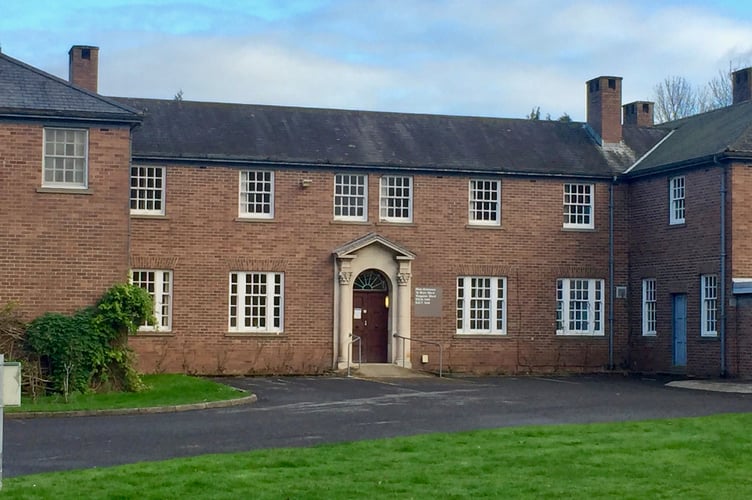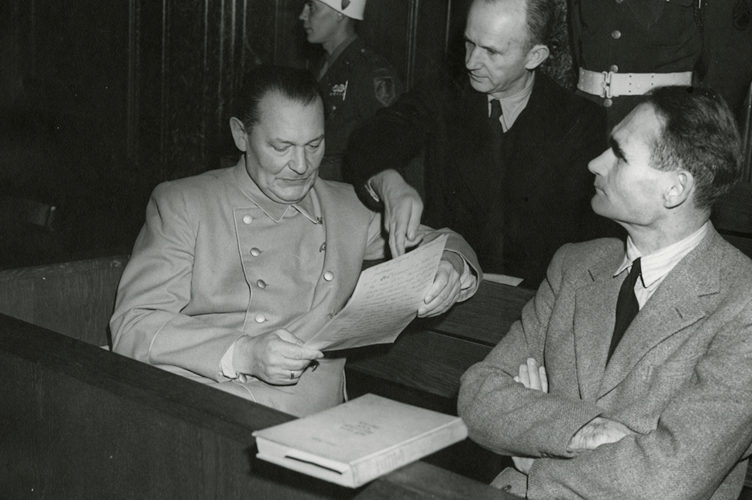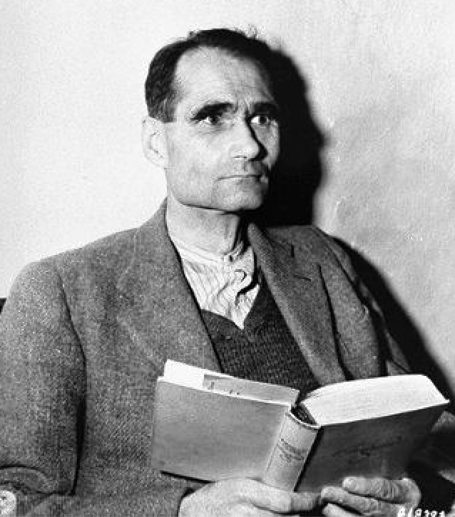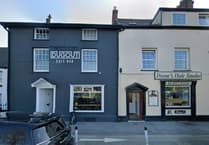IT’S exactly 80 years ago today (Wednesday, October 8) that Hitler’s deputy Rudolf Hess finally left Maindiff Court to be flown to Nuremberg to stand trial alongside the other Nazis.
Hess, who had flown himself to Britain in a bizarre peace mission in May 1941, escaped the hangman’s noose but was sentenced to spend the rest of his life behind bars at Spandau Prison in Berlin.
Life in the jail was totally different to the three and a quarter years ‘The Kaiser of Abergavenny’ spent under comfortable house arrest at Maindiff as a senior prisoner of war from June 26, 1942, to October 8, 1945.

The far more relaxed regime included a chauffeur-driven car, walks on the Sugar Loaf and Skirrid, trips to White Castle near Llantilio Crossenny and even pints in local hostelries like the Angel and Walnut Tree.
But that all came to an end 80 years ago this week, when he was spirited 20 miles north to Madley RAF base west of Hereford, and flown to Nuremberg to be incarcerated in spartan conditions during the 11-month-long ‘Trial of the Century’ of Germany’s surviving Nazis, including Goering, von Ribbentrop, Keitel, Jodl and Speer.

Half of the Maindiff former mental hospital was reportedly given over to Hess and his guards during his stay here, while the other half looked after wounded soldiers.
One of his guards, Joe Clifford, told the Chronicle shortly before his death in 2012 that Hitler’s former right-hand man saw them more like servants than jailers.
But Hess went on to spend the next 41 years behind the towering walls of Spandau, the last 20 as the jail’s only inmate – perhaps imagining himself strolling on the green hills around Abergavenny – before taking his own life, aged 93, on August 17, 1987.
His deluded ‘peace mission in a Messerschmitt 110 in May 1941 ending with a crash landing in a Scottish field was one of the stranger episodes of WWII, but it saved him from hanging as it meant he took no part in the major war crimes.
Joe, who settled in Abergavenny after moving here as one of the Deputy Fuhrer’s dedicated guards, said: "He used to draw and write, otherwise he was very quiet. He could speak English, but he very rarely spoke in English.
“The Sugar Loaf and White Castle were his favourite places and he would visit the Walnut Tree Inn when it was quiet.
“Hess was treated as an officer,” added Joe. “Whatever the officers had, he had the same sort of meals. He dined with the officers.“
“He dressed in a blue sports coat and grey flannel trousers and in the summer he’d have brown sandals on. He didn’t wear a hat. In the winter he wore a long blue coat.
"Now and again he would dress up in his uniform — the uniform that he had flown over in from Germany.
“He had a personal driver and a Morris shooting brake... that was his personal car as dictated by the Geneva Convention, he had to have this sort of treatment."
It’s also been claimed that Hess even dined with Lord Tredegar at Tredegar House.
“Ninety per cent of the time he was quiet," said Joe. “But now and again he’d rave and shout and stamp his feet and on one occasion he stabbed himself in a suicide attempt.
”When he got bad news, such as being told of the Allied victory in Europe, Hess wasn't very happy. “





Comments
This article has no comments yet. Be the first to leave a comment.